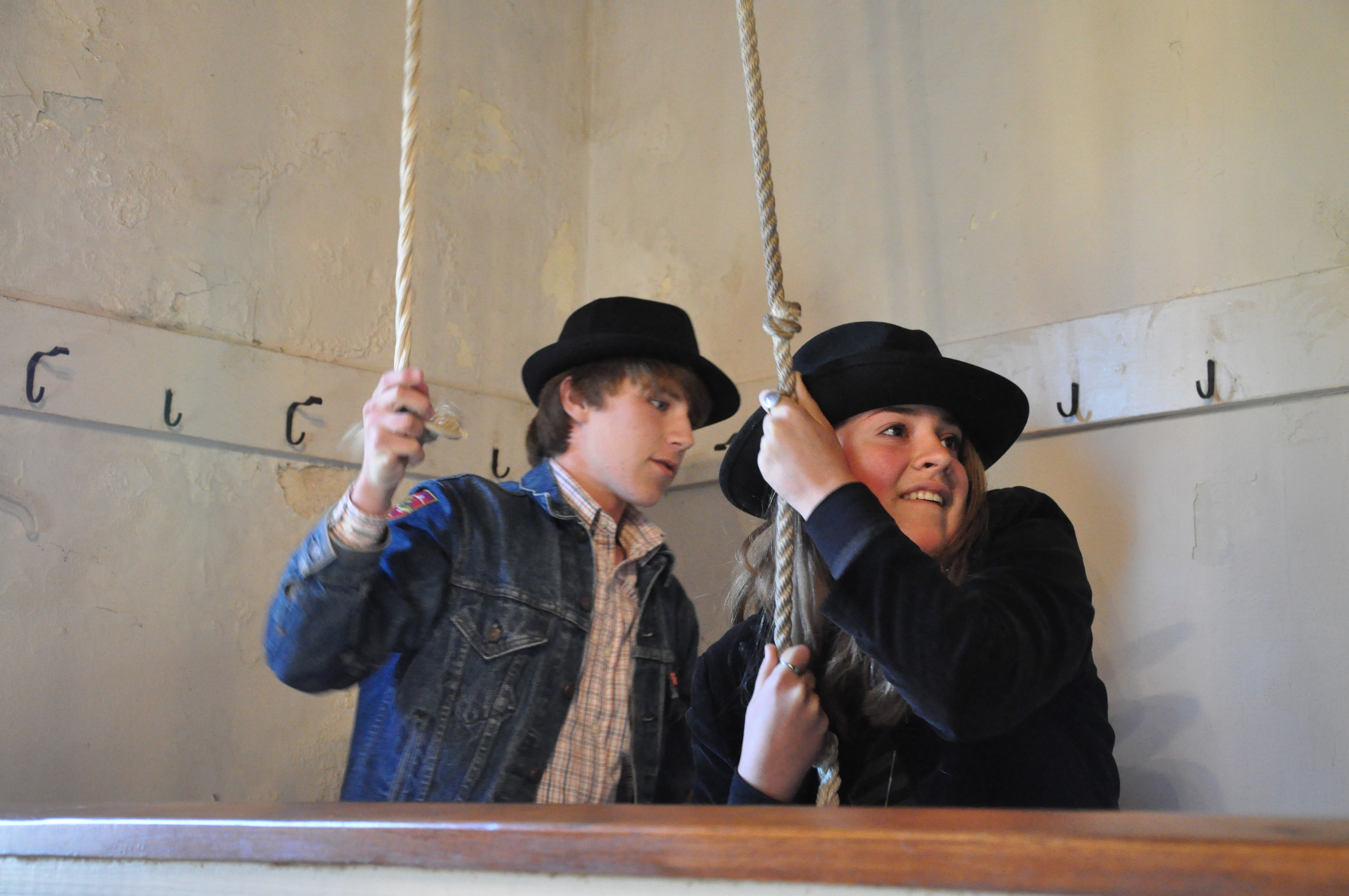For the love of chocolate, the bells in the tower in the chapel at St. Andrew's-Sewanee School continue to ring.
On Sunday, for the 92nd consecutive year, the three bells will ring at 11:11 a.m. CST on Armistice Day as a celebration of peace and as a reminder of how the Episcopal Church-affiliated school on Monteagle Mountain acquired its bells with the help of some Episcopal women in Morristown, N.J.
"Everybody we can muster" rings the bell, said Sherri Bergman, director of communications and marketing at the Sewanee, Tenn., school. "There's a line snaking down [the tower] and out the chapel steps."
Money for the bells was given to what was then St. Andrew's School in 1918 from leftover funds
collected by the Episcopal women, who had solicited money to send chocolates to U.S. soldiers overseas before the end of World War I.
The school, then all boarding, had completed its chapel in 1914 but lacked the funds to outfit the bell tower.
In return for the $2,000 gift from the New Jersey women, the school agreed to ring the bells for 11 minutes on the 11th day of the 11th month at 11:11 a.m. every year in memory of those who died in World War I and as a prayer for peace.
Because of the New Jersey connection to what have become known as the Chocolate Bells and because of the school's founding by monks from the Order of the Holy Cross in West Park, N.Y., the school has had an affinity for the Northeast.
This year, St. Andrew's-Sewanee will have the opportunity to assist the area of the country that helped it nearly a century ago.
Bergman said the school annually sends information about the Chocolate Bells event to two Episcopal churches in Morristown, but the churches recently acknowledged they could not certify a specific link to the women.
In a recent email acknowledging receipt of the letter about the event and conceding relative safety following Hurricane Sandy, though, the Rev. Cynthia L. Black, rector of the Church of the Redeemer, mentioned a tree had fallen on the church's Eric Johnson House (for people living with AIDS) and suggested it might be a good fundraising project for the school.
The church's insurance will pay for the tree to be removed, she said, but the congregation will have to come up with the $1,000 deductible. The money for the deductible, she said, might better feed more than 200 people in the church's soup kitchen, house 10 people in its transitional housing program and help host Narcotics Anonymous and Alcoholics Anonymous meetings.
Bergman said permission quickly was given to raise the money to cover the deductible or to be used in whatever way the church wants. An email solicitation already has been sent out, she said, and the school's Fellowship of Christian Athletes has asked to be involved.
"These two groups who never met each other," she said, "there's a sense of responsibility for one another."
The Chocolate Bells, in addition to being rung every Armistice Day, now commonly called Veterans Day, are rung at the beginning of and conclusion of each chapel service and after victories by the school's sports teams.
"It's a huge thing for our sports teams," said Bergman. "The team comes back to the campus, pulls the bus up to the chapel" and the players ring the bells. "Everybody on campus knows that they won."
Grace Pyle, 17, said the chapel is "definitely significant" on the campus. It often graces the front page of the yearbook, she said, and is the first things visitors see.
The senior from Monteagle said she rang the bells for the first time last year when the annual event was scheduled at 11:11 a.m. on 11/11/11.
"It's so fun," she said.
The bells and their mounts were made in Baltimore and together weigh more than a ton. Installed in 1920, they were dedicated to three archangels, Uriel, Raphael and Michael.
The chapel itself is the oldest building on campus, according to Bergman, and needs to be reinforced. If it did not have "such incredibly deep sentimental value," she said, it might have been replaced.
As it is, she said, "that building is the heart of the campus. Yes, it has had leaks and the plaster is sometimes crumbling, but it is the soul of this place."
